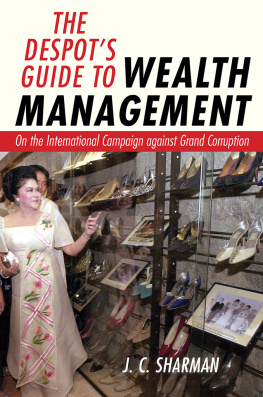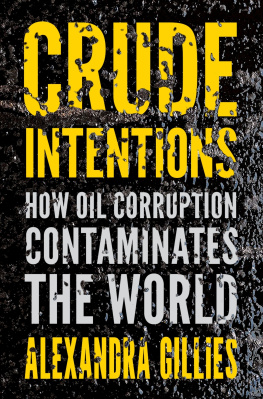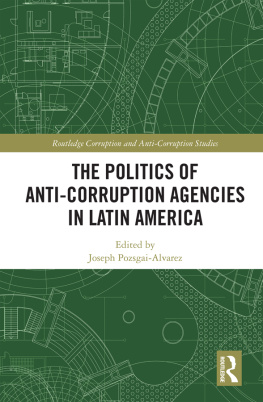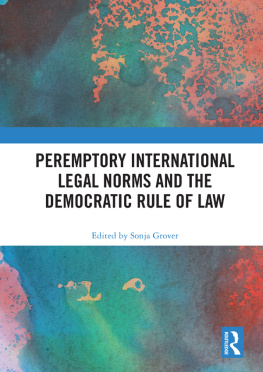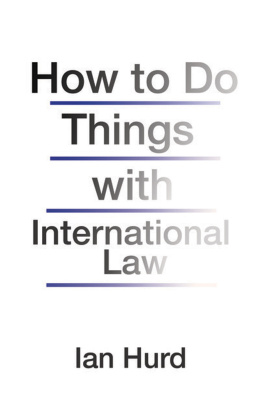P REFACE
This book examines the rise of a global norm and associated rules prohibiting one country from hosting money stolen by senior officials from another country. State leaders, generally from poorer countries, have routinely looted millions or even billions of dollars from their national treasuries. Where does the money go? All too often, it is spent or stashed in rich countries. Until very recently, rich countries have had no moral or legal obligation to do anything about these inward flows of dirty money. Now states have a moral and legal duty to screen, seize, and return such illicit wealth to the victim state.
The main aim of this book is to answer a few simply stated but difficult questions. First, why did this normative and policy change occur? Why did a situation that had long been seen as common and unremarkable come to be viewed as immoral and a policy problem in need of a solution, especially given the powerful vested interests favoring the status quo? Second, how well is this campaign against hosting the proceeds of grand corruption working? To what extent are shortcomings in effectiveness a product of a lack of will, because governments are not really trying to fix the problem, or a lack of capacity, given that the problem is hard to solve? Finally, the book concludes with some suggestions on how we could do a better job of holding corrupt leaders to account.
To sketch out the answers in brief, there is a surprising degree of consensus that change was a result of the coincidence of the end of the Cold War and the need to explain failures in Western development policies in poor countries. Media and policy accounts began to perceive widespread, persistent poverty as the flip side and result of the vast wealth accumulated by corrupt elites. In the 1990s, kleptocratic but reliably anti-Communist client governments in the Third World were subject to new scrutiny and pressure from Western patrons in the name of good governance. The change in global standards occurred rapidly, but in a decentralized, uncoordinated way, rather than being the deliberate result of calculated strategy by either self-seeking states or vanguard norm entrepreneurs. In countries with the largest banking and financial systems, favorable external conditions for action were catalyzed by scandals involving foreign despots laundering their ill-gotten gains.
Although there are some recent successes in countering kleptocracy, so far only a small minority of corrupt leaders have been held to account through the confiscation of their stolen wealth. Though shortcomings are in part a product of realpolitik, and even more so of banks commercial incentives and influence over politicians and regulators, there are genuine policy challenges that have been more important in explaining the effectiveness gap. The inherent difficulty of international legal action in a world of sovereign states, the expense and complexity of bringing such actions, and the legitimate protections accorded to private property and those accused of crimes mean that asset recovery is a long shot. Prevention and deterrence seem to be more promising options, with asset recovery a last resort.
The broader conclusions are that even in an area where there is much room for cynicism about the dominance of money and national self-interest in politics, this is not the whole story. If it were, there would simply be no campaign against kleptocracy. The status quo suited banks and rich and poor governments alike. The interplay of noble sentiments, power politics, and financial greed makes this issue typical of messy political life, a messiness that demands a detailed exploration of events.
Assessing the incidence of secret criminal activity is difficult. Evidence to back up the claims above is drawn from four studies of rich countries that host significant sums of money stolen by senior officials from poor countries: the United States, the United Kingdom, Switzerland, and Australia. With varying speed and effectiveness, each of the first three states has taken some action to trace, seize, and return these illicit funds to their countries of origin. On the other hand, Australia typifies a larger group of countries that has not matched fine words with action, instead turning a blind eye to the laundering of foreign corruption proceeds. In concentrating on host states, my aim is thus different from fascinating recent studies of grand corruption that focus on victim countries from where the money is stolen. I draw on extensive interviews in the period 20062015 with those in government, law enforcement, regulatory bodies, international organizations, nongovernmental organizations (NGOs), and private sector law firms and banks. The book also draws on participation and observation in bodies such as the Stolen Asset Recovery Initiative (a joint enterprise of the World Bank and the United Nations Office on Drugs and Crime, covered in chapter 1), the G20 Anti-Corruption Working Group, the World Bank, the Financial Action Task Force on money laundering, and the Asia-Pacific Group on Money Laundering. To gather evidence for the Australian case study, I engaged a private investigator to analyze corporate and property records to track the inward flow of corruption funds to specific properties, companies, and banks.
In addition, brilliant and fearless investigative journalists, sometimes working with even more courageous whistle-blowers, have provided intimate detail on particular schemes (the importance of journalists, NGOs, and whistle-blowers in pushing the anti-kleptocracy agenda generally, but also in driving forward cases against particular leaders, is an important lesson of the book). Information from a variety of official sources, from government agencies to intergovernmental organizations to courts, has also been invaluable. Finally, though the academic literature on grand corruption is relatively small, there is a much larger body of work on corruption, money laundering, and other related financial crimes that has strongly informed and shaped the argument of this book.
Although I had written on financial crime before, I was at first reluctant to study corruption because I thought that the hypocrisy might be a little too much. Officials from governments and international organizations devoted to fighting money laundering and tax evasion are generally sincere and are seldom guilty of the same crimes they denounce. When it comes to corruption, this is less clear. One of the reasons corruption is so insidious is that a fair number of the people preaching against it are themselves corrupt. Policy makers generally cant say this, whereas academics can (one reason its good to be an academic).
What I had failed to appreciate, however, and what in many ways more than compensated for this rather depressing realization, was the opportunity to read about and in some cases meet people who are fighting corruption at great personal risk (unlike those who just study corruption; another reason its good to be an academic). It has been a humbling but also uplifting experience to learn something about these people and in a very small way to recognize their work and problems in this book.
I wrote the first sentence of this book on August 2, 2014. That I finished it is thanks to many different kinds of help I received. I would like to acknowledge that parts of chapter 5 derive from an article, Illicit Global Wealth Chains after the Financial Crisis: Micro-states and an Unusual Suspect, to be published with the Review of International Political Economy .

